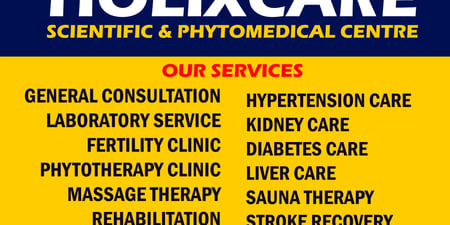Chinese Massage
Chinese massage therapists near you
How can Chinese Massage nourish you?
Rooted in ancient Traditional Chinese Medicine (TCM), Chinese massage is a form of bodywork that has been used as a healing tool for centuries[1].
Tui Na, meaning to ‘push’ and ‘grasp[2],’ is a popular form[3] of Chinese massage that uses rhythmic compression techniques along the energy channels of the body[4], or ‘meridians,’ to ease muscle tension and lubricate the joints. This is done to promote balance and harmony in the body.
Much like acupuncture or acupressure therapies also used in TCM, the main objective of Chinese massage is to apply pressure to acupoints[5], meridians and muscles to remove the blockages that obstruct the flow of ‘Qi,’ the body’s life force or energy. When Qi is not in balance, there is ill-health or disease.
Chinese massage practitioners are trained to identify the pathways with limited flow[6]. As such, manipulation techniques are performed to remove these blockages and restore health and vitality back to the body.
In Australia, to provide therapeutic massage according to the Traditional Chinese Medicine remedial massage framework, a one-year Diploma of Traditional Chinese Medicine Remedial Massage[7] is required. This qualification is necessary for accreditation with associations such as the Australian Natural Therapists Association (ANTA)[8].
The peak national organisation in Australia for Chinese medicine practitioners, including traditional Chinese massage therapists, is the Australian Acupuncture and Chinese Medicine Association (AACMA)[9]. Members affiliated with this organisation are required to abide by their professional standards of conduct and practice guidelines.
Benefits of Chinese Massage
Chinese massage is designed to work on the body as a whole and may aid in the treatment of both external musculoskeletal conditions, as well as the balancing of internal health. The suggested benefits therefore include physical pain relief[10], as well as supported emotional health[11].
In a large systematic review, it was suggested that Chinese massage may be beneficial in the treatment of lumbar disc herniation[12], a common spinal disorder associated with low back pain.
There is also clinical evidence to support the view that Chinese massage may be effective in decreasing knee pain and improving muscle strength[13]. Moreover, Chinese massage has been shown to improve joint mobility and range of motion[14], as well as reducing inflammation after exercise.
What to expect from a Chinese Massage session
A Chinese massage will typically last between 30 minutes and one hour. Your Chinese massage practitioner may incorporate traditional techniques such as[15] brushing, kneading, rolling, holding and pressing to manipulate your energy channels.
Hand pressure is therefore applied in various ways to target areas between joints, muscles, tendons and ligaments, along meridians and at specific acupoints. Both passive and active range of motion and traction techniques may also be used, and these will vary according to your individual requirements.
If you are not used to regular massage, you may find the pressure applied in Chinese massage to be fairly strong. This is because Chinese massage is generally not used for pleasure or relaxation[16], but to address imbalance and disharmony in the body.
As with any exercise or wellness program, please consult your medical professional before commencing Chinese massage. Although some people turn to Chinese massage as a path towards restoring health, it should never be used as a replacement for conventional medicine. If you have an injury or other health issue, or any concerns at all, also speak to your Chinese massage practitioner, who will be happy to address these and personalise the session to your individual requirements.
References
1. The History of Massage Therapy: 5,000 Years of Relaxation and Pain Relief. Florida Academy; 2019.
2. Acupuncture & Chinese Medicine. Chinese Health Institute; [cited on 2024 Nov 29].
3. Traditional Chinese Massage. ATMS; [cited on 2024 Nov 29].
4. Chinese Tui Na. Massage & Myotherapy Australia; [cited on 2024 Nov 29].
5. Rush T, Cronkleton E. Potential Benefits of Tuina Massage. Healthline; 2024.
6. An Overview of Basic Techniques for Traditional Chinese Massage Therapy. Fremont.edu; [cited on 2024 Nov 29].
7. Diploma of Traditional Chinese Medicine (TCM) Remedial Massage. Your Career; [cited on 2024 Nov 29].
8. Natural Therapy Courses. Australian Natural Therapists Association; [cited on 2024 Nov 29].
9. About AACMA. The Australian Acupuncture and Chinese Medicine Association; [cited on 2024 Nov 29].
10. Zhang H, Chen H, Wang H, Li D, Jia B, Tan Z, et al. Effect of Chinese tuina massage therapy on resting state brain functional network of patients with chronic neck pain. Journal of Traditional Chinese Medical Sciences; 2015.
11. Aung SKH, Fay H, Hobbs RF. Traditional Chinese Medicine as a Basis for Treating Psychiatric Disorders: A Review of Theory with Illustrative Cases. Medical Acupuncture; 2013.
12. Mo Z, Li D, Zhang R, Chang M, Yang B, Tang S. Comparisons of the effectiveness and safety of tuina, acupuncture, traction, and Chinese herbs for lumbar disc herniation: A Systematic Review and Network Meta-Analysis. Evidence-based Complementary and Alternative Medicin; 2019.
13. Qingguang Z, Jianhua L, Min F, Li G, Wuquan S, Nan Z. Effect of Chinese massage (Tui Na) on isokinetic muscle strength in patients with knee osteoarthritis. Deleted Journal; 2017.
14. Chang WG, Chen CY, Li WF, Chou CC, Liao YH. Traditional Chinese acupressure massage ameliorates systemic inflammatory responses and joint mobility limitation after acute repeated jumping exercise. EXPLORE; 2019.
15. Tui Na (推拿). Piedmont Acupuncture and Oriental Medicine; [cited on 2024 Nov 29].
16. Tui na. University of Minnesota; [cited on 2024 Nov 29].


